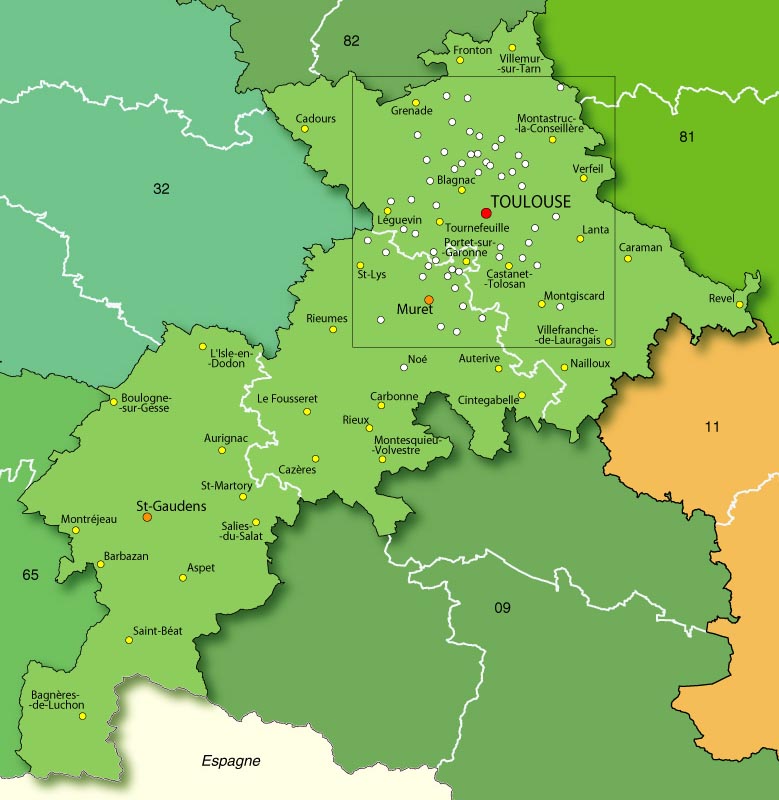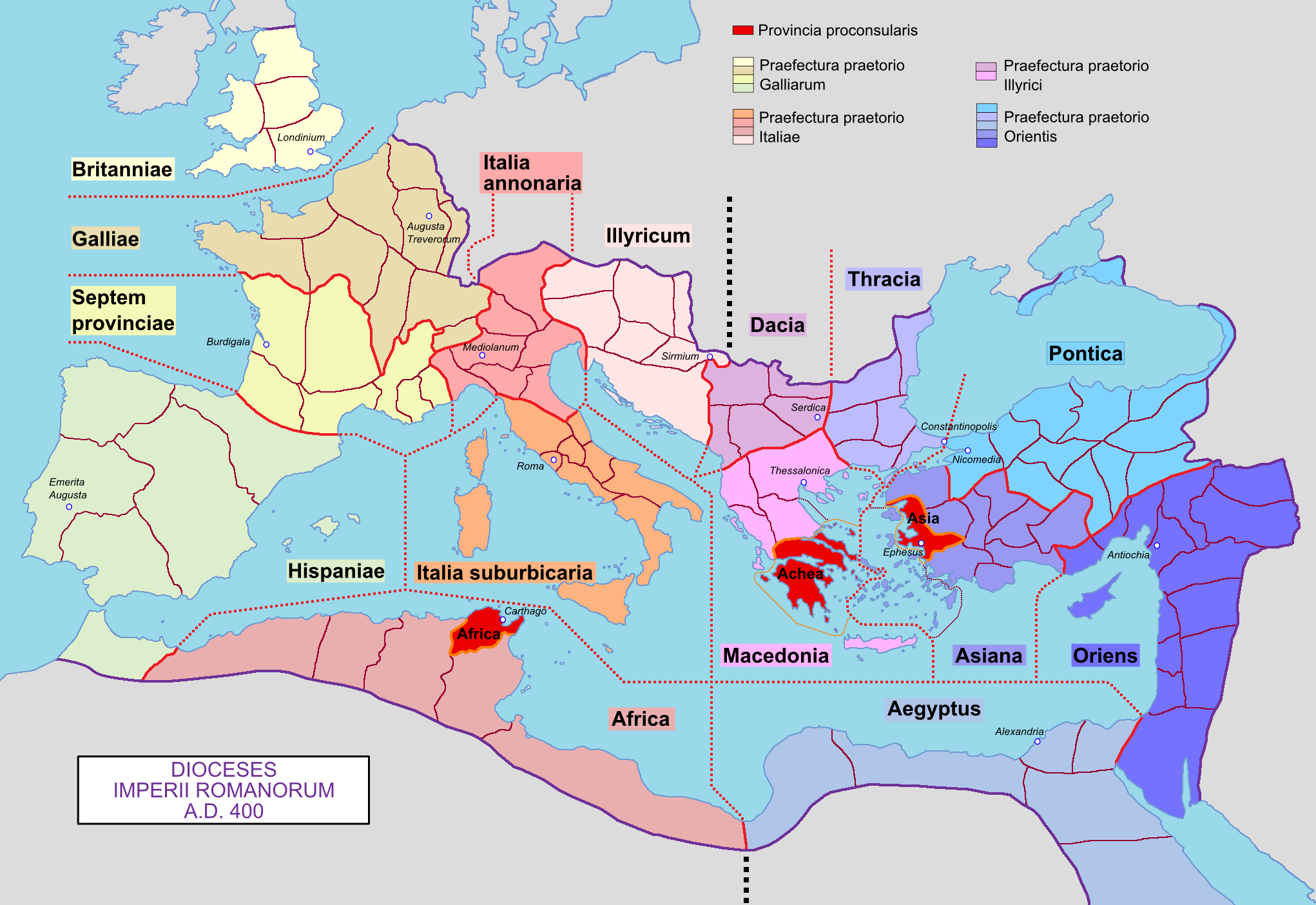|
Archbishop Of Toulouse
The Archdiocese of Toulouse (–Saint Bertrand de Comminges–Rieux) is a Latin Church ecclesiastical territory of the Catholic Church in France. The diocese comprises the Department of Haute-Garonne and its seat is Toulouse Cathedral. Archbishop Guy de Kerimel has been its head since 2021. In 2022, in the Archdiocese of Toulouse there was one priest for every 3,997 Catholics Suffragans The Archdiocese has 7 suffragan dioceses and archdioceses: Archdiocese of Albi, Archdiocese of Auch, Diocese of Cahors, Diocese of Montauban, Diocese of Pamiers, Diocese of Rodez, Diocese of Tarbes-et-Lourdes. Jurisdiction As re-established by the Concordat of 1802, it included the departments of Haute-Garonne and Ariège, at which time, the archbishop joined to his own the title of Auch, jurisdiction over Auch being given to the Diocese of Agen">Ariège (department)">Ariège, at which time, the archbishop joined to his own the title of Auch, jurisdiction over Auch being given to th ... [...More Info...] [...Related Items...] OR: [Wikipedia] [Google] [Baidu] |
Toulouse Cathedral
Toulouse Cathedral () is a Roman Catholic church architecture, church located in the city of Toulouse, France. The cathedral is a Monument historique, national monument, and is the seat of the Archbishop of Toulouse. It has been listed since 1862 as a ''monument historique'' by the French Ministry of Culture. cathédrale Saint-Etienne History The Romanesque cathedral The cathedral is said to have been built atop the foundations of a chapel constructed in the 3rd century by Saint Saturnin, sent to Christianize the Gauls and martyred in Toulouse. It is said to have been reconstructed by Saint Exuperius, Bishop of Toulouse, one hundred and fifty years later. This first documented cathedral is recorded at the beginning of the 5th century, but nothing remains of the original building. A Romanesque architecture, Romanesque cathedral was constructed on the same site beginning in about 1078. The Romanesque structure was smaller than the present church; it was probably about twenty mete ... [...More Info...] [...Related Items...] OR: [Wikipedia] [Google] [Baidu] |
French Language
French ( or ) is a Romance languages, Romance language of the Indo-European languages, Indo-European family. Like all other Romance languages, it descended from the Vulgar Latin of the Roman Empire. French evolved from Northern Old Gallo-Romance, a descendant of the Latin spoken in Northern Gaul. Its closest relatives are the other langues d'oïl—languages historically spoken in northern France and in southern Belgium, which French (Francien language, Francien) largely supplanted. It was also substratum (linguistics), influenced by native Celtic languages of Northern Roman Gaul and by the Germanic languages, Germanic Frankish language of the post-Roman Franks, Frankish invaders. As a result of French and Belgian colonialism from the 16th century onward, it was introduced to new territories in the Americas, Africa, and Asia, and numerous French-based creole languages, most notably Haitian Creole, were established. A French-speaking person or nation may be referred to as Fra ... [...More Info...] [...Related Items...] OR: [Wikipedia] [Google] [Baidu] |
Archdiocese Of Albi
The Archdiocese of Albi(); () is a Latin archdiocese of the Catholic Church in France. It is suffragan to the Archdiocese of Toulouse, and it comprises the department of Tarn. In the 12th century, the spread of alternative beliefs in the region led to the arrival of church authorities to refute and try the "heretics". Among them were the Good Men, from whom the Cathars became known as Albigensians. The latter held their own council in 1167, and their bishopric was defined. In 1179, Pope Alexander III summoned the Third Lateran Council, where he condemned them. In the early 1200s, a religious and military crusade was waged against the movement and they were largely destroyed. The Diocese of Albi was established in the 5th century and was under the Archdiocese of Bourges for centuries. On 3 October 1678, Pope Innocent XI made it an archdiocese. With the arrival of the French Revolution, it was suppressed in favor of Tarn. With the Concordat of 1801, it was integrated into th ... [...More Info...] [...Related Items...] OR: [Wikipedia] [Google] [Baidu] |
Archdiocese Of Auch
The Archdiocese of Auch-Condom-Lectoure-Lombez (Latin: ''Archidioecesis Auxitana-Condomiensis-Lectoriensis-Lomberiensis''; French: ''Archidiocèse d'Auch-Condom-Lectoure-Lombez''), more commonly known as the Archdiocese of Auch, is a Latin Church ecclesiastical territory or archdiocese of the Catholic Church in France. The archdiocese now comprises the department of Gers in south-west France. The archdiocese is a suffragan of the Archdiocese of Toulouse, and the current bishop is Bertrand Lacombe, appointed in 2020. He is the 119th bishop of Auch. In 2022, in the Archdiocese of Auch there was one priest for every 3,478 Catholics. History Originally erected in the 5th century as the diocese of Auch, the first bishop of Auch known to history is the poet Orientius (first half of the fifth century), in honor of whom a famous abbey was founded in the seventh century. A local legend of the 13th century attributes to King Clovis (c. 466–511) the promotion of Auch to the status o ... [...More Info...] [...Related Items...] OR: [Wikipedia] [Google] [Baidu] |
See Of Montpellier
The Metropolitan Archdiocese of Montpellier (–Lodève–Béziers–Agde–Saint-Pons-de-Thomières) (Latin: ''Archidioecesis Metropolitae Montis Pessulani (–Lotevensis–Biterrensis–Agathensis–Sancti Pontii Thomeriarum)''; French: ''Archidiocèse Metropolitain de Montpellier (–Lodève–Béziers–Agde–Saint-Pons-de-Thomières)'') is a Latin archdiocese of the Catholic Church in south-western France. The current metropolitan archbishop is Pierre-Marie Carré; the immediate past Archbishop Emeritus is Guy Marie Alexandre Thomazeau. On September 16, 2002, as part of the reshuffling of the map of the French ecclesiastical provinces, the diocese of Montpellier (Lodève, Béziers, Agde, and Saint-Pons-de-Thomières) ceased to be a suffragan of Avignon and was elevated to archdiocese and metropolitan of a new ecclesiastical province, with the dioceses of Carcassonne, Mende, Nimes (Uzès and Alès) and Perpignan–Elne as suffragans. History The diocese's original d ... [...More Info...] [...Related Items...] OR: [Wikipedia] [Google] [Baidu] |
Diocese Of Carcassonne
The Diocese of Carcassonne and Narbonne (Latin: ''Dioecesis Carcassonensis et Narbonensis''; French: ''Diocèse de Carcassonne et Narbonne'') is a Latin Church ecclesiastical jurisdiction or diocese of the Catholic Church in France. The diocese comprises the entire department of Aude. It is suffragan to the Archdiocese of Montpellier. On the occasion of the Concordat of 1802, the former Diocese of Carcassonne, nearly all the old ..., the former Diocese of Carcassonne, nearly all the old Archdiocese of Narbonne, almost the entire Diocese of Saint-Papoul">Archdiocese of Narbonne"> ..., the former Diocese of Carcassonne, nearly all the old Archdiocese of Narbonne, almost the entire Diocese of Saint-Papoul, a part of the ancient Diocese of Alet and ancient Diocese of Mirepoix, and the former Diocese of Perpignan, were united to make the one Diocese of Carcassonne. In 1822 the Diocese of Perpignan was re-established. In 2006 the diocese of Carcassonne was renamed the Diocese of Car ... [...More Info...] [...Related Items...] OR: [Wikipedia] [Google] [Baidu] |
Diocese Of Agen
In church governance, a diocese or bishopric is the ecclesiastical district under the jurisdiction of a bishop. History In the later organization of the Roman Empire, the increasingly subdivided provinces were administratively associated in a larger unit, the diocese (Latin ''dioecesis'', from the Greek term διοίκησις, meaning "administration"). Christianity was given legal status in 313 with the Edict of Milan. Churches began to organize themselves into dioceses based on the civil dioceses, not on the larger regional imperial districts. These dioceses were often smaller than the provinces. Christianity was declared the Empire's official religion by Theodosius I in 380. Constantine I in 318 gave litigants the right to have court cases transferred from the civil courts to the bishops. This situation must have hardly survived Julian, 361–363. Episcopal courts are not heard of again in the East until 398 and in the West in 408. The quality of these courts ... [...More Info...] [...Related Items...] OR: [Wikipedia] [Google] [Baidu] |
Ariège (department)
Ariège (; ) is a Departments of France, department in southwestern France, located in the regions of France, region of Occitania (administrative region), Occitanie. It is named after the river Ariège (river), Ariège and its capital is Foix. Ariège is known for its rural landscape, with a population of 153,287 as of 2019.Populations légales 2019: 09 Ariège INSEE Its Institut national de la statistique et des études économiques, INSEE and postal code is 09, hence the department's informal name of ''le zéro neuf''. The inhabitants of the department are known as ''Ariègeois'' or ''Ariègeoises''. Geography [...More Info...] [...Related Items...] OR: [Wikipedia] [Google] [Baidu] |
Concordat Of 1802
A concordat () is a convention between the Holy See and a sovereign state that defines the relationship between the Catholic Church and the state in matters that concern both,René Metz, ''What is Canon Law?'' (New York: Hawthorn Books, 1960 [1st Edition]), p. 137 i.e. the recognition and privileges of the Catholic Church in a particular country and with secular matters that affect church interests. According to P. W. Brown the use of the term "concordat" does not appear "until the pontificate of Pope Martin V (1413–1431) in a work by Nicholas of Cusa, Nicholas de Cusa, entitled ''De Concordantia Catholica''. The first concordat dates from 1098, and from then to the beginning of the World War I, First World War the Holy See signed 74 concordats. Due to the substantial remapping of Europe that took place after the war, new concordats with succession of states, legal successor states were necessary. The post–World War I era saw the greatest proliferation of concordats in histo ... [...More Info...] [...Related Items...] OR: [Wikipedia] [Google] [Baidu] |
Haute-Garonne
Haute-Garonne (; , ; ''Upper Garonne'') is a department in the southwestern French region of Occitanie. Named after the river Garonne, which flows through the department. Its prefecture and main city is Toulouse, the country's fourth-largest. In 2019, it had a population of 1,400,039.Populations légales 2019: 31 Haute-Garonne INSEE History Haute-Garonne is one of the original 83 departments created during the French Revolution on 4 March 1790. It was created from part of the former provinces of and |
Departments Of France
In the administrative divisions of France, the department (, ) is one of the three levels of government under the national level ("territorial collectivity, territorial collectivities"), between the Regions of France, administrative regions and the Communes of France, communes. There are a total of 101 departments, consisting of ninety-six departments in metropolitan France, and five Overseas department and region, overseas departments, which are also classified as overseas regions. Departments are further subdivided into 333 Arrondissements of France, arrondissements and 2,054 Cantons of France, cantons (as of 2023). These last two levels of government have no political autonomy, instead serving as the administrative basis for the local organisation of police, fire departments, and, in certain cases, elections. Each department is administered by an elected body called a departmental council (France), departmental council ( , ). From 1800 to April 2015, these were called gene ... [...More Info...] [...Related Items...] OR: [Wikipedia] [Google] [Baidu] |
Diocese
In Ecclesiastical polity, church governance, a diocese or bishopric is the ecclesiastical district under the jurisdiction of a bishop. History In the later organization of the Roman Empire, the increasingly subdivided Roman province, provinces were administratively associated in a larger unit, the Roman diocese, diocese (Latin ''dioecesis'', from the Greek language, Greek term διοίκησις, meaning "administration"). Christianity was given legal status in 313 with the Edict of Milan. Churches began to organize themselves into Roman diocese, dioceses based on the Roman diocese, civil dioceses, not on the larger regional imperial districts. These dioceses were often smaller than the Roman province, provinces. Christianity was declared the Empire's State church of the Roman Empire, official religion by Theodosius I in 380. Constantine the Great, Constantine I in 318 gave litigants the right to have court cases transferred from the civil courts to the bishops. This situa ... [...More Info...] [...Related Items...] OR: [Wikipedia] [Google] [Baidu] |





